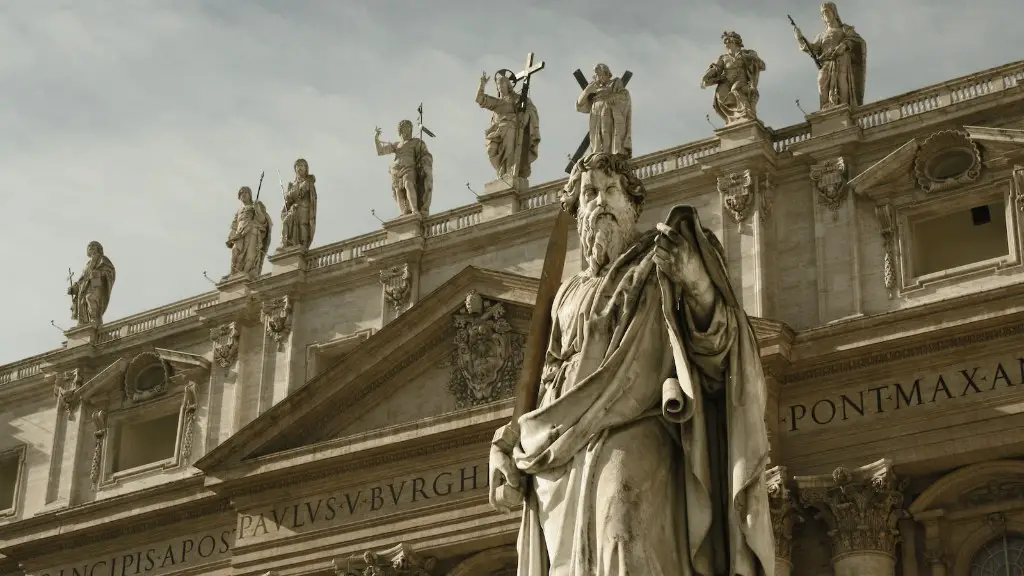Slave Rights and Ancient Rome
Slaves were an integral part of Ancient Rome, forming the backbone of its economy and society. They were not only forced to work in the city and on the farms, but were also used to give their wealthy and powerful masters complete power over them. Slaves in Ancient Rome had no rights and had no protection under the law, yet their situation was not uniform throughout the Empire. This article explores the different kinds of rights that slaves had in Ancient Rome and how, over time, those rights evolved.
Situation of Slaves in Ancient Rome
In Ancient Rome, slaves were treated as property and even seen as subhuman. They were often subject to cruel and unusual punishments, including being thrown to wild animals, whipped, or burned to death in public. Owners were free to do what they wanted with their slaves, including making them fight in gladiator matches or killing them at will.
Slaves were also unable to marry, hold property, and were severely restricted in their movement. They were not allowed to gather in public places, nor were they allowed to testify against their masters, even when the masters had done them wrong. In addition, slaves were not allowed to own or carry weapons.
Slave Rights in Ancient Rome
The rights of slaves in Ancient Rome were primarily determined by the masters. Generally, owners would give slaves bare minimum in terms of food and clothing while they were confined to work and obedience.
Most slaves could earn some form of compensation if they provided services beyond their daily duties. For example, some slaves could earn money by working outside of their normal duties and some could even negotiate some form of freedom.
Slaves were sometimes allowed to own some personal possessions, such as jewelry or clothing. These possessions were usually property of the master and had to be returned upon the death of the slave.
Evolution of Slave Rights in Ancient Rome
The rights of slaves evolved over time, largely due to the efforts of wealthy Roman citizens. While the rights of slaves remained limited, the citizens began to advocate for more humane treatment. As the Roman Empire expanded, it came into contact with other cultures and began to adopt some of their practices. This led to the gradual improvement of slave rights in Ancient Rome.
For instance, under law, slaves were granted the right to have a marriage ceremony and receive some legal protection against cruel treatment. In addition, some slaves were given the right to own land and to pass on their property to their descendants.
The Roman Empire also began allowing slaves to become citizens, thereby enhancing their rights and granting them better protection. This was an important step in the evolution of slave rights.
Effects of Slavery on Ancient Rome
Slavery had a major impact on the Roman Empire. Slaves formed the backbone of the economy, as they were employed in agriculture, construction, and factories. Without them, the Roman Empire would have struggled to develop the infrastructure and manage its large areas.
However, the prevalence of slavery in Ancient Rome had several negative repercussions. Most notably, it resulted in massive human suffering and led to the breakdown of family and communal bonds. In addition, the Roman economy became increasingly dependent on slave labor, making it difficult to transition to a more equitable system.
Agricultural Slavery in Ancient Rome
Agricultural slavery was a common practice in Ancient Rome. Slaves were used to manage the farms effectively, including cultivation, harvesting, and storage. They were often subjected to cruel treatment by their masters, and received little to no compensation for the expensive and labor-intensive work that they had to do.
In some cases, slaves were sold for highly expensive prices, making it difficult for the average person to purchase them. As a result, the Roman Empire was dependent on an extensive slave trade to keep the agricultural sector running.
In addition, slaves were typically used on a seasonal basis, meaning that they had to be constantly replaced as the seasons changed. This was an expensive and inefficient process that affected the economy of Ancient Rome.
Public Slavery in Ancient Rome
Public slavery was another common practice in Ancient Rome, as slaves were used to manage the construction of public buildings and monuments, as well as the city’s transportation and military systems. Slaves were also used to manage the entertainment of the wealthy, such as performing in plays and circuses.
It was common for slaves to be sold and traded within the empire and in some cases, they were even forced to fight in gladiator matches. This was a brutal and widespread practice, leading to a massive loss of human life.
Slaves in Ancient Rome were also used in government positions, such as advisors and administrators, and were often given positions of power within the military. This practice led to an even greater reliance on slavery, as the Roman Empire relied on slaves to run the day-to-day operations of the state.
Non-Agricultural Slavery in Ancient Rome
Non-agricultural slavery was widespread in Ancient Rome, as slaves were employed in numerous industries, including mining, metalworking, and manufacturing. Slaves were also used for domestic labor, such as cleaning and cooking, and were often employed in public service, like collecting taxes or managing public events.
While some of these positions provided slaves with a level of autonomy, most remained chained and subjected to oppressive conditions. As a result, the vast majority of slaves found it difficult to escape the cycle of servitude, leading to a life of poverty and misery.
Slave Revolts in Ancient Rome
Slave revolts were a major problem in Ancient Rome, as slaves rose up against their oppressors in an attempt to fight for their freedom. The most famous of these revolts was the Spartacus Revolt in 73 BC, which saw thousands of slaves rise up against their masters in a bloody battle led by former gladiator Spartacus.
Spartacus and his followers were eventually defeated, but the revolt had a major impact, as it showed how powerful and determined the slaves were to fight for their rights. This revolt also highlighted the need for better rights for slaves, leading to the gradual improvement of their rights over time.
Death Penalty for Slaves in Ancient Rome
The death penalty for slaves was a common practice in Ancient Rome, as slaves were often seen as expendable. Masters often authorized death sentences for crimes such as theft or rebellion. In addition, the death penalty was often used as a form of punishment, such as in the case of the Spartacus revolt.
However, the death penalty was not used as widely as it may seem. In some cases, masters would offer reprieve if slaves could prove their innocence or if they completed a specific task. In addition, if a master was unsatisfied with a slave’s performance, they could also choose to release them or transfer them to another owner.
Conclusion of Slavery in Ancient Rome
Slavery in Ancient Rome was a highly oppressive system, as slaves were treated as property and had no rights or protections. Nonetheless, over time, the rights of slaves were slowly enhanced, leading to more humane treatment and more opportunities for freedom.
The most notable example of this is the eventual granting of citizenship to slaves. This ushered in a new era of freedom and improved the situation of slaves in Ancient Rome, making their lives more bearable and allowing them opportunities that otherwise would not have been available.


